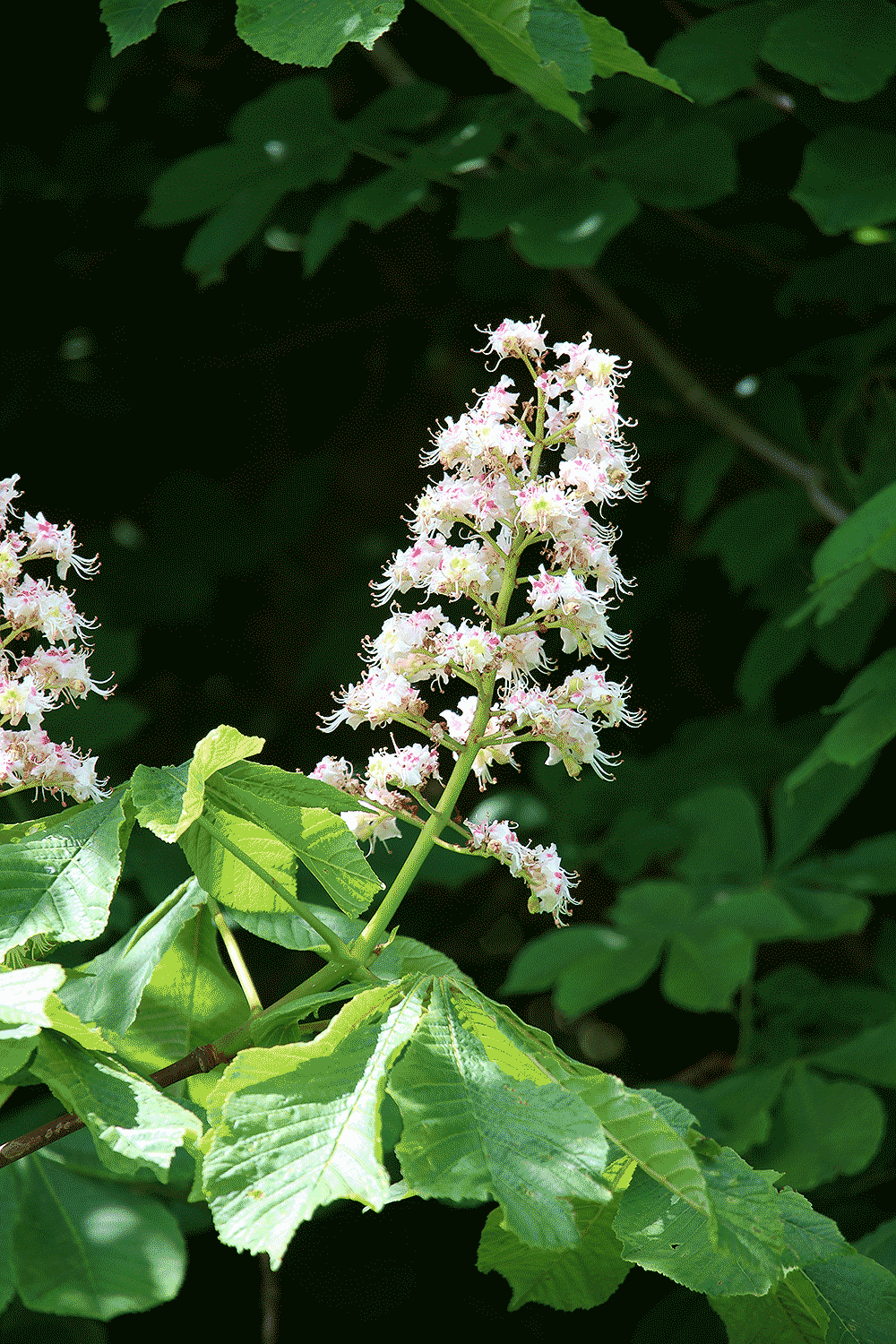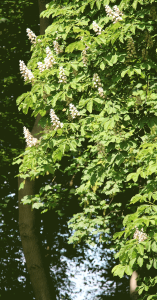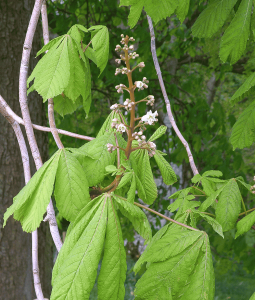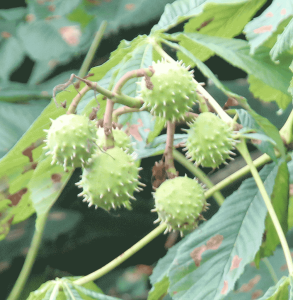The Horse Chestnut tree immediately brings to mind the quintessential English village green with its broad spreading canopy, masses of white summer flowers and autumn games of conkers. In reality this is a plant which contradicts itself at every turn. Originally coming from the Balkans Peninsula (the bit that hangs down to the right of Italy with Greece hanging on the bottom) it was unknown outside of the region until the 16th century. The first written reference to it was in a 1557 letter from Istanbul by the wonderfully named Willem Quackelbeen. A description of the plants discovery and rediscovery by Professor H. Walter Lack can be found here . Even when first introduced it was believed to be from Asia and the first botanist to claim to have found the plant growing wild in the Balkans was disbelieved. In France its common name is still Marronier d’Inde which literally translates as Chestnut of India. The English Horse Chestnut comes from the belief that it could be used to treat horses, though it is actually poisonous to them, and that it was a close relative of the edible Sweet Chestnut, though all parts of the plant are poison to humans. In fact A. hippocastanum L. is only distantly related to the Sweet chestnut (Castanea sativa Mill.) with taxonomists placing them in separate orders.
So as well as not been a chestnut A. hippocastanum L. does not produce nuts, the conkers loved by generations of school-children are seeds and the spiky case they are found in, the actual fruit, is a “valvate capsule”! The scientific name is little better Linnaeus chose Aesculus as the genus name but it is the Latin name for a kind of Oak which bears edible fruits and the specific name hippocastanum comes from the Greek name for the plant hippocastanon with Greek for horse ίππος is pronounced “hippos.
The rapid A. hippocastanum L. spread across western Europe following its introduction and its continued popularity are testament to its value as an ornamental tree as it is of very little commercial value; it is poisonous and the wood is little used. This is soft, not very durable and difficult to give a good finish to. In the wild it is a short lived component of mixed hardwood woodland and only in cultivation is it allowed to grow to an impressive sizes of over 30m forming a wide dense canopy of leaves.
The tree is easily grown in normal garden soils but it does need a lot of space. Since 2000 the disease bleeding canker has become a wide spread problem but it appears to progress slowly and given time trees do appear to recover from it. The main problem with the disease is that it can weaken all or part of the tree and so cause a danger in that way.
A number of cultivars are available including Aesculus hippocastanum ‘Baumannii’ which is sterile so preventing the problem of conkers. There is also a red hybrid Aesculus x carnea which you see planted but it rarely lives up to expectation and the improved cultivar Aesculus x carnea ‘Briotii’ should be chosen if a red chestnut is wanted.






